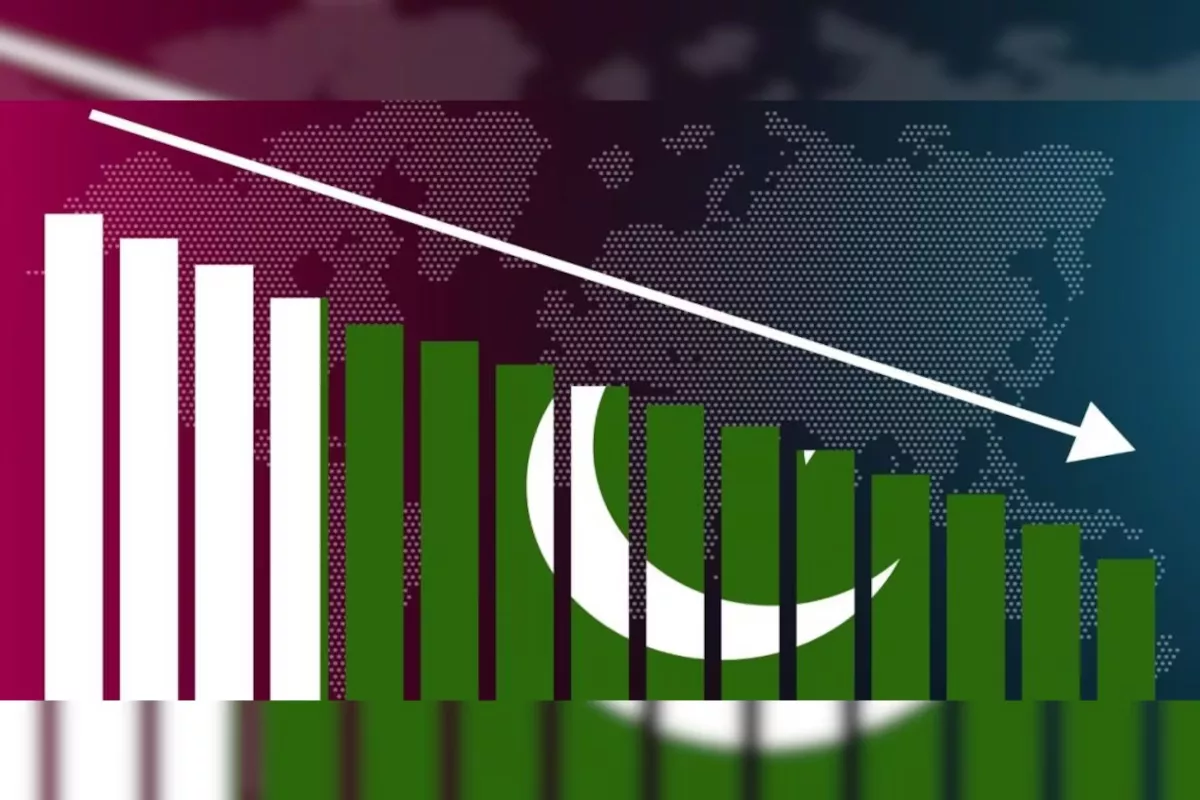Pakistan’s External Debt Skyrockets by 38% in Just One Year, Reaching PKR 20.69 Trillion.
According to the SBP, the central government's domestic debt increased by PKR 3.218 trillion, or 10.4 per cent, in the first seven months (July to January) of the current fiscal year.

Pakistan’s External Debt Skyrockets by 38% in Just One Year, Reaching PKR 20.69 Trillion.
Pakistan’s external debt has been rising for a while, and that trend will likely continue through 2023 since the country’s external debt increased by 38% in a year to PKR 20.69 trillion. This represents a huge increase over the previous year when external debt stood at PKR 14.97 trillion. Why has this increase occurred, and what does it mean for Pakistan’s economy?
According to the State Bank of Pakistan (SBP), the Pakistani government’s debt increased by PKR 4 trillion (about 7.7 per cent) in January 2023, bringing the total amount of debt owed by the country’s government to nearly PKR 55 trillion (around $7.3 trillion).
When compared to January 2022, when the figure was PKR 42.39 trillion, a 30% growth is seen. Meanwhile, domestic debt increased to PKR 34.3 trillion by the end of January, 3.4% more than at the end of December and around 25% higher than at the end of January 2017.

Understanding External Debt
Before delving into the reasons behind Pakistan’s external debt surge, it is essential to understand what external debt is. External debt is the amount of money owed by a country to foreign lenders, including governments, organizations, and individuals. This debt is usually denominated in foreign currencies, making it vulnerable to exchange rate fluctuations.
Reasons Behind Pakistan’s External Debt Surge.
There are several reasons why Pakistan’s external debt has surged in recent years. One of the main reasons is the country’s growing current account deficit, which refers to the difference between exports and imports.
In 2021, Pakistan’s current account deficit stood at $4.4 billion, up from $1.1 billion in the previous year. This deficit has increased the country’s reliance on external borrowing to finance its import bill.
Another factor contributing to Pakistan’s external debt surge is the COVID-19 pandemic, which has adversely affected the country’s economy. The pandemic has resulted in lower revenue collections, higher health-related expenses, and a slowdown in economic activity. To mitigate these challenges, the government has had to rely on external borrowing to finance its expenses.
Additionally, Pakistan’s reliance on short-term borrowing has also contributed to its external debt surge. Short-term borrowing is debt that has to be repaid within one year, and it is usually used to finance imports and other short-term expenses. However, this type of borrowing can be risky, especially if the country is unable to repay the debt when it falls due.
Dawn stated that Pakistan’s external debt amounted to PKR 20.69 trillion, an increase of 15.7% month over month and 38.6% year over year. Borrowing has become a crucial part of Pakistan’s economy.
According to the SBP, the central government’s domestic debt increased by PKR 3.218 trillion, or 10.4 per cent, in the first seven months (July to January) of the current fiscal year.
At the end of January, the government had borrowed PKR 20.9 trillion through long-term, high-cost Pakistan Investment Bonds (PIBs), up from PKR 15.59 trillion at the same time last year. According to Dawn, the government’s long-term, high-yield borrowing has already cost a fortune, cutting into development spending.

Pakistan’s interest-to-revenue ratio, which was already the worst in the region (only below Sri Lanka’s 42%), will skyrocket to 54.0% by the end of June 2023. It indicates an increase from Rs 4 trillion ($100 million) to Rs 5.4 trillion ($300 million).
The recent 300 basis point hike will impact the government’s ability to allocate funds for development and other necessities in the SBP’s policy interest rate. The federal government’s external debt climbed by 38% from January 2022 to January 2023.
Dawn reports that as of the end of January, the total external debt had grown by 23.5% to the tune of Rs 3.939 trillion. The depreciation of the rupee has contributed to a sharp increase in the country’s external debt, which is only anticipated to accelerate over the next month.
The government will need to make preparations for this extra money for external debt servicing after uncapping the exchange rate last month, which caused the dollar to surge by roughly 20%.
According to Dawn, SBP data also showed that the central government’s overall debt, which includes both domestic and external debt, grew by 15% (Rs 7.158 trillion) from July to January.
According to a recent story in The Dawn, Pakistan’s external debt servicing increased by 70% in the first two quarters of 2022-23, further aggravating the country’s dire need for foreign currency. Based on numbers released by the State Bank of Pakistan (SBP), Pakistan paid USD 10.21 billion in external debt servicing in the first half of the fiscal year, compared to USD 6 billion in the same time in 2021-22.
Implications of Pakistan’s External Debt Surge.
The surge in Pakistan’s external debt has several implications for the country’s economy. One of the most significant implications is the increase in debt servicing costs. Debt servicing costs refer to the interest payments and principal repayments on external debt. As Pakistan’s external debt has surged, so have its debt servicing costs, which can put a strain on the country’s finances.
Pakistan’s credit rating will likely suffer as a result of the country’s recent increase in external debt. A country’s ability to pay back its debts is measured by its credit rating, which can have an impact on how much it will cost to borrow money. A surge in external debt can lead to a downgrade in a country’s credit rating, which can make it more expensive for the country to borrow in the future.

Finally, the surge in external debt can also have political implications for the country. External debt can be a source of political pressure from lenders, who may demand certain policy changes or reforms in exchange for further lending.
In conclusion, Pakistan’s external debt has surged by 38% in a year to PKR 20.69 trillion, which is a significant increase from the previous year. The surge in external debt is due to several factors, including the country’s growing current account deficit, the COVID-19 pandemic, and its reliance on short-term borrowing.
The implications of this surge include an increase in debt servicing costs, a potential downgrade in the country’s credit rating, and political pressure from lenders. As Pakistan continues to grapple with these challenges, it will be essential for the government to take steps to manage its external debt and ensure the country’s long-term economic stability.
edited and proofread by nikita sharma




